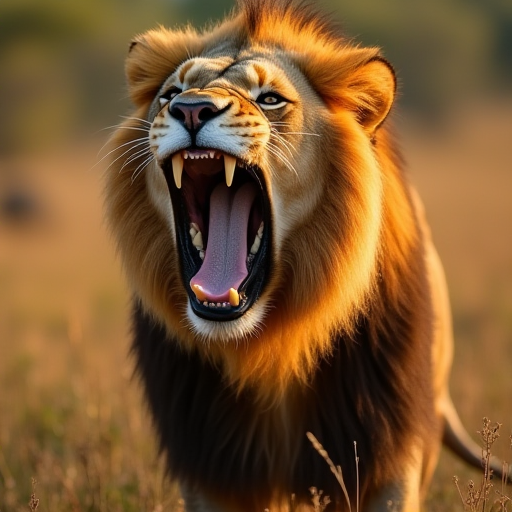
Why Do Lions Roar?
Lions, often referred to as the "king of the jungle," are majestic creatures known for their strength, prowess, and, perhaps most intriguingly, their powerful roar. The roar of a lion is one of the most iconic sounds in the animal kingdom. But why do lions roar? This article explores the various reasons behind this fascinating behavior.
Communication
Territorial Claims
One of the primary reasons lions roar is to establish and communicate territory. A lion's roar can carry for miles, serving as a powerful signal to other lions. By roaring, lions can assert dominance over a particular area and warn rival prides or solitary lions to stay away. This territorial communication helps to avoid physical confrontations by establishing boundaries through auditory signals.
Social Cohesion
Lions are social animals, living in groups known as prides. Within these prides, communication is essential for maintaining social structure and cohesion. Roaring serves as a way for pride members to keep track of each other's location, especially in the vast expanses of the African savannah. This vocalization helps in coordinating movements, hunting strategies, and ensuring that no member of the pride is left behind.
Mating and Reproductive Signals
Roaring can also play a significant role in the mating behavior of lions. Male lions, in particular, use their roar to display their strength and virility to potential mates. A powerful roar serves as an advertisement of a male lion's fitness, attracting females during the breeding season. Conversely, females may also roar to signal their readiness to mate, thereby facilitating reproductive success.
Warning and Threat Display
A lion's roar is an intimidating sound that can deter potential threats. When faced with danger, lions may roar to assert their dominance and intimidate other animals, including potential predators or rival lions. This use of roaring as a threat display can prevent conflicts and protect the pride from harm.
Identification and Recognition
Each lion has a unique roar that can be recognized by other lions. This individuality in roaring allows lions to identify each other over long distances. It helps pride members recognize each other, maintain social bonds, and reinforce social hierarchies within the group.
The Science Behind the Roar
Anatomy of the Roar
The lion's roar is made possible by specialized anatomical structures. Lions possess a unique set of vocal cords that are flat and square-shaped, which allows them to produce deep, resonant sounds. This anatomical adaptation enables lions to roar at a frequency that can travel over long distances, making it an effective tool for communication across the savannah.
Acoustics and Range
A lion's roar is incredibly loud, reaching up to 114 decibels, akin to the sound of a rock concert or a chainsaw. This sound can be heard up to five miles away under the right conditions. The low frequency of the roar allows it to travel further than higher-pitched sounds, ensuring that the message is conveyed across vast distances.
Conclusion
In summary, the roar of a lion is not just a symbol of its power and majesty; it is a complex form of communication with multiple purposes. From establishing territory and maintaining social bonds to attracting mates and deterring threats, roaring is a vital aspect of a lion's life. Understanding the reasons behind a lion's roar provides insight into the social and ecological dynamics of these magnificent creatures. As we continue to study lions, their roars remind us of the intricate and fascinating ways in which animals communicate within their environments.
